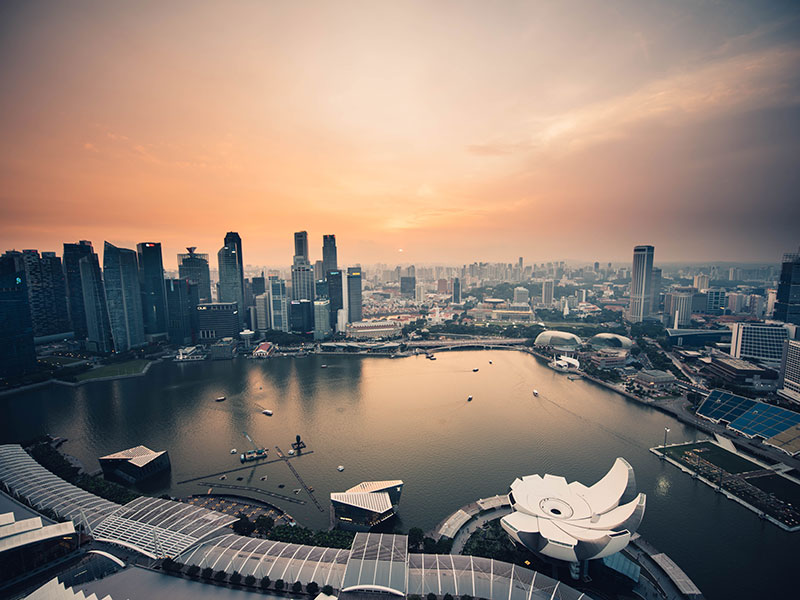Iran is the second largest economy in the Middle East and North Africa (MENA) region after Saudi Arabia, with an estimated Gross Domestic Product (GDP) of US$D 406.3 billion in 2014. It also has the second largest population of the region after Egypt, with an estimated 80.8 million people as ofindividuals in July 2014. Iran’sts economy is characterized by a large hydrocarbon sector, small scale agriculture and services sectors, and a noticeable state presence in manufacturing and financial services. Iran ranks second in the world in natural gas reserves and fourth in proven crude oil reserves. Aggregate GDP and government revenues still depend to a large extent on oil revenues and are therefore intrinsically volatile.
Iranian authorities have adopted a comprehensive strategy encompassing market-based reforms as reflected in the government’s 20-year vision document and Iran’s fifth Five-Year Development Plan (FYDP, 2011–15). The Iranian state continues to play a key role in the economy, however, owning large public and quasi-public enterprises which partly dominate the manufacturing and commercial sectors. The financial sector is also dominated by public banks. Moreover, the business environment remains a challenge with the country ranking 130th out of the 189 countries surveyed in the 2015 Doing Business Report. Algeria, Djibouti, Iraq, Libya, the Syrian Arab Republic, West Bank and Gaza, and Yemen rank lower among MENA countries.
The Iranian government has implemented a major reform of its indirect subsidy system on key staples such as petroleum products, water, electricity and bread, which has resulted in a moderate improvement in the efficiency of expenditures and economic activities. The overall indirect subsidies, which were estimated to be equivalent to 27% of GDP in 2007/2008 (approximately US$D 77.2 billion), have been replaced by a direct cash transfer program to Iranian households. Domestic fuel prices have risen in parallel, thereby contributing toward reducing the deficit of the Targeted Subsidies Organization (TSO) which still remains substantial (estimated at 1.3% of GDP). A second phase of subsidy reform is being considered which would improve the targeting of the cash transfers to low-income households.
The Iranian economy rebounded out of recession, with growth estimated at 3.0% in 2014 compared to a contraction of 1.7% in 2013. This comes as a result of the temporary and partial easing of sanctions imposed on Iran’s oil exports, on the supply chain in key sectors of the economy—such as in the automobiles industry—and on the transactions of international and domestic banks, as well as a rise in consumer and business confidence that a comprehensive agreement between Iran and the P5+1 is within reach.
The Joint Plan of Action (JPA) has resulted in a gradual increase in oil exports, with Asian countries estimated to have increased their imports from Iran by 19.8 percent% in 2014, with the average of the four main clients (i.e. China, India, Japan and South Korea) reaching 1.12 million barrels per day (mbpd).
The economy has also benefitted from the real exchange rate depreciation through improved international competitiveness in the agriculture, manufacturing, and non-oil exports. Data from Iran’s Customs Administration show that Iran’s non-oil exports rose 24.2 percent% in the first ten months of the current Iranian calendar year (i.e., March 21-January 20, 2015) compared to the same period last year. Furthermore, the depreciation of the real exchange rate has improved the competitiveness of the agriculture, manufacturing, and non-oil exports sectors, as well as of the hydrocarbons industry. Inflationary pressures on the economy have eased from a year-on-year peak of 35% in 2013 to 15% in 2014. This was facilitated by a number of factors including the appreciation of the Iranian Rial, the decline in global prices for key staples, and the easing of international sanctions.
Unemployment remains elevated and is expected to be a central challenge for the government. According to the Statistical Center of Iran, the unemployment rate was estimated at 10.3% in 2013. Unofficial sources, however, estimate the overall unemployment rate to be as high as 20%. The unemployment rate is particularly worrisome among women,the female ( 20.3%,) and youth, populations ( 24%). The incidence of underemployment has also become highly prevalent. The weakness seen in the labor market comes within a context in which only 36.7% of the population is economically active.
Tight labor market conditions are exacerbated by the rise in the participation rate of women and the large number of youth entering the labor market. This trend is expected to be maintained in line with the evolving socio-economic profile of the country which is increasingly characterized by higher educational attainment rates for women—which exceed rates for their male counterparts— and a relatively low household formation rate. Similarly, the demographic profile of the country is characterized by a disproportionately high youth population (with over 60% of Iran’s population estimated to be under the age of 30). As a result, some 750,000 youth are estimated to enter the labor market every year, with a large portion becoming unemployed, abandoning their job search and joining the ranks of the economically inactive population.
Not surprisingly, it is estimated that some 150,000 Iranians with tertiary education leave the country every year. The government estimates that the country must create some 8.5 million jobs over the next two years with stated of objective to reduce the unemployment rate to 7% by 2016. This projection assumes a constant labor force participation rate. The labor force participation rate is likely to rise, however, with a large number of discouraged workers returning to the labor force. This suggests that the unemployment rate might remain elevated for the foreseeable future even if the government’s job creation target is met.
In 2005, poverty was 1.45% in Iran using a poverty line of US$1.25 per day (PPP). World Bank projections estimate that only 0.7% of the population (or half a million people) lived under this poverty line in 2010, although a large proportion of people are living close to it. Indeed, raising the poverty line by US$0.5 (from US$2 to US$2.50 and from US$3 to US$3.50) could put 4%-6% of the population – over 4.5 million people - in poverty. This suggests that many individuals are vulnerable to changes in their personal disposable income and to the persistent rise in the cost of living.
With a view to improving the prospects for the economy, the Iranian government has announced several measures including: raising the productive capacity of the non-oil segment of the economy, giving greater autonomy to the Central Bank, broadening the tax base, stabilizing and unifying the domestic currency in the market, reinstating the Management and Planning Organization which was in charge of drafting the government budget and the country’s five year development plans, and opening up the oil sector to foreign companies for investment and technical assistance. The economic outlook has improved since last year in line with the interim measures adopted by Iran and the P5+1 group (United States, United Kingdom, France, Russia, China and Germany) under the Joint Plan of Action.
The government has expressed commitment to having sanctions on Iran eased and taming inflationary pressures on the economy. These initiatives would ultimately increase the country’s export potential, raise the purchasing power of consumers, and support consumption and business investment through improved consumer and business confidence. The 2015 forecast, which assumes continuously low oil prices and a marginal decline in oil export volumes starting in July 2015, suggests that the economy will expand by 0.6%. The inflation is forecast to remain relatively contained at 17.3%.
Last Updated: Mar 01, 2015
































